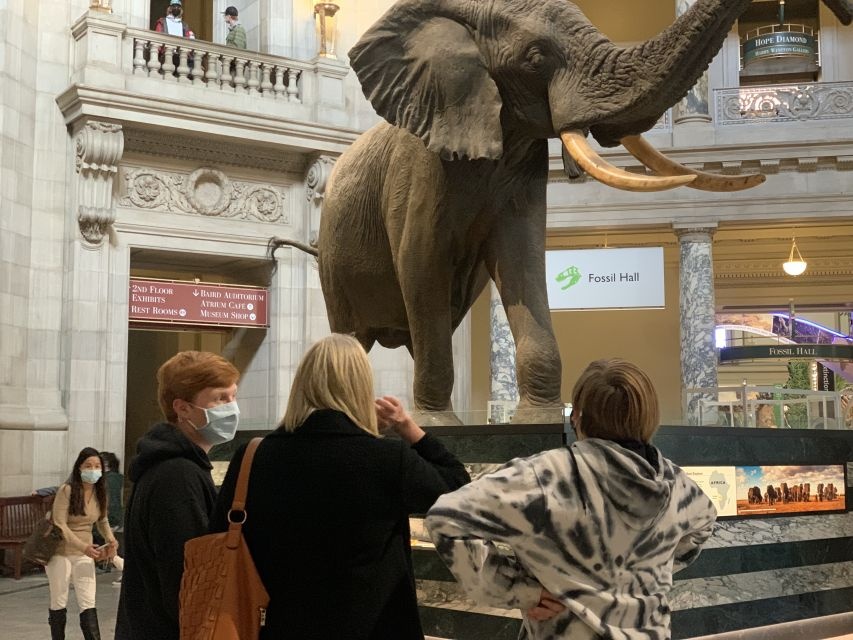Essential Gear for Museum-Guided Natural History Tours in Washington, DC
Explore Washington, DC’s museum-guided natural history tours equipped with practical gear that bridges indoor wonder and outdoor discovery. From comfortable footwear to hydration strategies, discover how to prepare for immersive journeys through history and nature.
Choose Versatile Footwear
Wear sturdy, closed-toed shoes that transition well from polished museum floors to outdoor grassy or paved paths around museum grounds.
Stay Hydrated With a Reusable Bottle
Carry a small water bottle to sip regularly, especially during outdoor segments when the DC summer heat intensifies.
Dress in Layers
Bring a lightweight jacket or fleece; indoor air conditioning contrasts sharply with warm outdoor temperatures, so layers keep you comfortable everywhere.
Schedule Mid-Morning Tours
Plan your tours for late morning to enjoy soft natural light inside museums and manageable crowds, enhancing your overall experience.
Essential Gear for Museum-Guided Natural History Tours in Washington, DC

Smithsonian National Museum of Natural History Guided Tour
2 Hours
Discover the secrets of Earth's history on a guided tour of the Smithsonian National Museum of Natural History. Engage with spectacular exhibits and learn from expert guides in the heart of Washington, D.C.
Washington, DC’s natural history museums are gateways to adventure—spaces where stories of ancient forests, sea creatures, and diverse ecosystems come alive under expert guidance. While the buildings hold treasures, the experience extends beyond exhibits, inviting visitors to engage actively with nature’s history. Planning a museum-guided natural history tour here means preparing for both indoor exploration and occasional outdoor excursions that bring you closer to the natural elements these institutions celebrate.
First, think of your gear as your map through time and terrain. Museums like the Smithsonian National Museum of Natural History offer guided tours that occasionally weave through nearby outdoor spaces, like the National Mall gardens or the Constitution Gardens. These paths range from paved, accessible routes to lawn areas where grass tussles at your feet, urging you to pause and feel the present layer of nature's story. Expect distances mostly under two miles per outing, with slight inclines and flat terrain, making it manageable for most fitness levels.
Footwear demands a practical blend of comfort and support. Closed-toed shoes with good grip help you navigate smooth museum floors as efficiently as the dew-damp grassy patches beyond. Layering is crucial—the climate indoors can be crisp while outside the sun may press warm against your skin. A lightweight jacket fits the bill, responding agilely to the push and pull of temperature changes. Hydration is a quiet challenge; small reusable bottles are ideal for sipping steadily, especially during warmer months when the city’s heat can nudge you toward fatigue.
Bring a compact notebook or digital recorder. Your guides will share facts and stories that ignite curiosity—capturing notes helps deepen the connection and lets you reflect after the tour ends. Binoculars or a smartphone with zoom capability enhance wildlife glimpses, whether it’s a fleeting red-tailed hawk circling above or a turtle sunning along the Tidal Basin’s edge, daring you to observe its slow, deliberate world.
Time your visit mid-morning for light that bends softly through museum windows and parks alike. Weekdays offer quieter crowds and room to move freely, letting you absorb details without rush. If your tour ventures outdoors, a hat and sunscreen become silent guards against urban sunbeams pressing down on sidewalks and green patches.
Washington’s museums invite you on a journey through earth’s history, lending you tools to connect practically and passionately with each discovery. With the right gear, these guided tours become more than passive sightseeing—they challenge you to engage with nature, human history, and the landscapes fiercely themselves.
Nearby Trips
All Adventures
Boat Charters
Water Activities
Adventures near Washington
Discover the unique and memorable adventures that make Washington special.
Frequently Asked Questions
Are these museum tours suitable for all ages?
Yes, the tours typically cover accessible routes and are designed to engage a broad audience, including families with children and seniors.
Can I bring a backpack into the museums and on the tours?
Small backpacks or daypacks are allowed but check specific museum policies. Avoid bulky bags to stay comfortable during walking portions.
Do these tours include outdoor walks through city parks?
Some guided natural history tours incorporate short outdoor segments around museum grounds, including paths through nearby gardens and the National Mall.
Is photography allowed inside or during the tours?
Photography is generally permitted in museums; however, flash and tripods may be restricted. Outdoors, you’re free to capture nature scenes and wildlife.
Are there any wildlife species I might spot during these tours?
Keep an eye out for red-tailed hawks, turtles around the Tidal Basin, and various songbirds active near green spaces adjoining museum locations.
What accessibility options are available for these tours?
Most museums and outdoor paths involved in the tours are wheelchair accessible, with flat, paved surfaces and accessible entrances.
Recommended Gear
Comfortable Closed-Toe Shoes
Supportive footwear ensures stable movement both inside museums and on exterior paths.
Lightweight Layered Clothing
Adapt to indoor AC and outdoor temperatures with versatile layers.
Reusable Water Bottle
Staying hydrated during outdoor portions wards off fatigue and heat stress.
Compact Notebook or Digital Recorder
Capturing details from guides enhances retention and personal engagement.
Local Insights
Hidden Gems
- "The Butterfly Pavilion near the Smithsonian offers seasonal live butterfly exhibits rarely crowded with visitors."
- "The Enid A. Haupt Garden behind the Freer Gallery is a quiet space exhibiting native and exotic plants reflecting natural history themes."
Wildlife
- "Red-tailed hawks patrolling the skies above the National Mall."
- "Common snapping turtles sunning near the Tidal Basin in warmer months."
- "Eastern gray squirrels bustling among trees surrounding the museums."
History
"Washington’s museums are more than exhibits; many stand on grounds with historic significance tied to America’s development in science and conservation, reflecting decades of natural history education."
